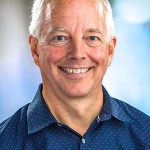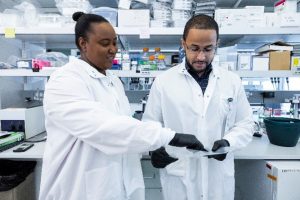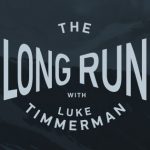Seattle Children’s Invests $45M in Minority Scientists Tackling Pediatric Disease
Many bright young people never get a chance to fulfill their potential as scientists because they never get on the usual scientific career on-ramps.
Many young people who get sick struggle because no one had the motivation or the wherewithal to develop new treatments or diagnostics.
Seattle Children’s Research Institute sees the problems, and has crafted a major initiative to tackle both at once. It’s through the Invent@SC Postdoctoral Scholars Program being announced today. It’s a program to recruit and support 50 postdoctoral researchers from underrepresented minority groups, helping them build on their scientific training to become scientific entrepreneurs and drug developers.
The 5-year, $45 million program includes a $12.5 million commitment from the Washington Research Foundation. Postdocs will get starting salaries of $65,000 a year – more than the NIH standard for living in Seattle – plus access to experienced industry mentors and technology resources. They’ll get training in inventorship, team science, and entrepreneurship that is seldom part of post-graduate education but which is essential to industry.
The program was designed with input from young minority scientists familiar with the challenges of those who come from disadvantaged backgrounds. To make it appealing to people who may not immediately gravitate to a predominantly white city like Seattle, it includes a community component with experienced lab, clinical, and industry mentors, many of whom are Black. The group’s connections also extend to the wider Seattle scientific community that includes labs at the University of Washington, Benaroya Research Institute and Fred Hutchinson Cancer Center.

Jim Olson, principal investigator, Seattle Children’s Research Institute; program director, Invent@SC
Jim Olson, a pediatric oncologist and founder of Seattle-based Presage Biosciences and Blaze Bioscience, is leading the Invent@SC program. He moved his lab from Fred Hutch to Seattle Children’s and gave up his clinical practice of 30 years to carve out more time for the initiative.
“This is a one-of-a-kind program,” Olson said. “It’s focused on pediatric therapeutics, with an emphasis on recruiting scientists from diverse backgrounds. We want to help educate the next-generation of biotech entrepreneurs.”
Most people that go to biotech companies were never trained to discover therapeutics, do milestone-driven research, or make the kind of go/no-go decisions required in industry, Olson said. He envisions Invent@SC developing a culture like that of a biotech company, with an emphasis on collaboration, and clear goals to develop new treatments for pediatric diseases.
Steve Graham, the co-chair of life sciences at Fenwick & West in Seattle, is retiring this month after a 40-year career. He’s one of the more prominent African Americans in biotech. He’s been winding down commitments.
But he said he couldn’t say no to an invitation to advise this new generation of young minority scientists.
“When I heard Jim describe this program, I said to myself that I have to do this,” Graham said. “This is something he really cares about fiercely. He’s passionate about it. It’s not a passing fancy. He’s truly aware of the issues, and his awareness extends to knowledge of what he’s not aware of. You sometimes run across people who are very, very smart, and that can sometimes translate into thinking they know everything. That tends not to be helpful in finding solutions.”

Steve Graham, co-chair, Fenwick & West Life Science Practice
Uciane Scarlett, a principal at MPM Capital in Boston, a cancer immunologist by training and a Black woman originally from Jamaica, is another of the mentors.
Scarlett said she agreed to help because Invent@SC meets a need for underrepresented scientists, it’s rigorous and milestone-driven like industry, and it’s focused on cell, gene and protein therapies that have a high chance of making an impact. (Disclosure: I’ve also agreed to serve as a mentor.)
“I am a true believer that the root cause of the limited diversity in life sciences is due to certain opportunity gaps for underrepresented groups,” Scarlett said. “Professor Olson is taking a holistic approach with the BIPOC program as he’s going above and beyond funding scholars to do research in childhood cancers — he’s also bridging a major component of the opportunity gap, and that’s access to relevant networks and mentors.”

Uciane Scarlett, principal, MPM Capital
The Seattle program isn’t the only one dedicated to launching scientific careers for members of underrepresented minority groups. The Howard Hughes Medical Institute (HHMI) last month announced the Freeman Hrabowski Scholars program. It’s starting with $1.5 billion of commitments over the next 20 years to propel the careers of 150 young scientists committed to improving diversity, equity and inclusion in science.
Moment of Inspiration
The original idea for the program goes back about six years, Olson said. That’s when one of the African American grad students in his lab, Eric Nealy, attended a seminar for HHMI Gilliam Fellows in the Washington DC area.
Nealy came back to the lab beaming.
“What’s going on? Did you find a new girlfriend or something?’” Olson recalled saying.
No, Nealy replied:
“I just spent a week surrounded by people who look like me who are smart and doing great biomedical research. It was the first time I felt like I belonged, like I wasn’t the only one.”

Alison Williams and Eric Nealy. Photo courtesy of Seattle Children’s.
That got Olson thinking. Could he create a more inclusive community, starting small in his own lab? He had conversations over the years with many scientists from minority groups – including Nealy, who’s now a postdoc, and Alison Williams, a research scientist in the Olson lab. Their input, along with others, helped shape the program.
Creating an inclusive and supportive community in this case means more than recruiting a couple of Black scientists. It means casting a wider net to attract scientists from indigenous groups, or others from underrepresented backgrounds. It could include people who grew up in foster care, were homeless, identify as LGBTQIA, or are the part of the first generation in their family to go to college.
The goal will be to recruit an average of 10 postdocs per year for five years. The program is seeking applications this month, and will accept them on a rolling basis, Olson said.
Applicants will be evaluated not just on the traditional accomplishments valued in academia. Some of those accomplishments get accumulated after doors are opened for people who have multi-generational connections to science, Olson said. The Invent@SC program, aware of traditional structural disadvantages for young people who don’t have those advantages, will seek candidates based more on potential, motivation, curiosity, creativity and commitment to gaining new knowledge, Olson said.
Once candidates are selected, the next crucial step will be in fostering the sense of support and belonging. The program is holding a launch event tomorrow in Seattle as a first step. It’s establishing a social fabric that’s hard to measure, but undeniably important in advancing scientific careers where failure is so common.
“Too often, you find people of color, or women, who find themselves in positions where they could thrive but they don’t thrive because there’s no one there to understand their position,” Graham said. “As a result, they don’t get the right kind of moral support.”
Seattle Children’s, like other institutions in the Seattle scientific community, has an entrepreneurial track record. Its faculty have contributed to Juno Therapeutics, Be Biopharma, and Umoja Biopharma, among other recent startups. It has valuable resources for scientific entrepreneurs, including an 11,000-square-foot GMP facility for making novel cell therapies, and a 4,700-square-foot VectorWorks GMP facility for manufacturing product candidates for early phase clinical trials.
Olson emphasized the combination of the resources of Seattle Children’s, and the people who are curious and hungry to make good use of them. The tools of cell therapy, gene therapy and advanced biologic capabilities at Seattle Children’s are unique among its peer institutions, he said. Those tools can be brought to bear on research into pediatric autoimmunity, mental health and infectious diseases.
Olson, 59, said underrepresented minorities have made major contributions in his lab over the years. That includes the “tumor paint” work that led to the founding of Seattle-based Blaze Bioscience.
The Invent@SC program is an attempt to build on that type of success, and to do it in a more intentional and intensely focused way.
“When I see people coming into my lab with unrealized potential and all of a sudden they discover tumor paint and start a company, or help come up with technology for Presage, they sometimes look back and can’t believe what they accomplished,” Olson said. “I saw something special in these people. Sometimes it was a chip on the shoulder. Resilience. Or natural curiosity. All I did was create an environment where they could flourish. I get so much joy out of that.”




